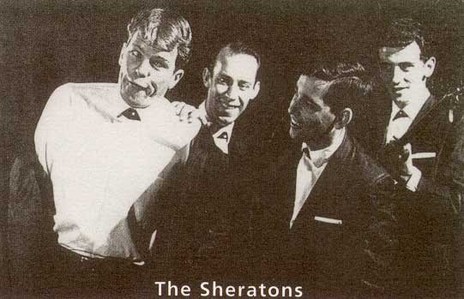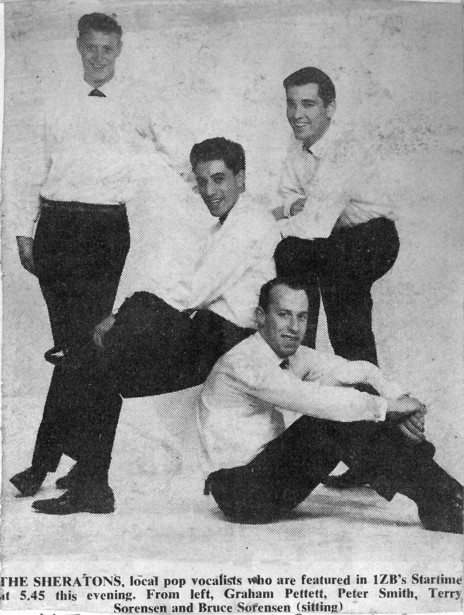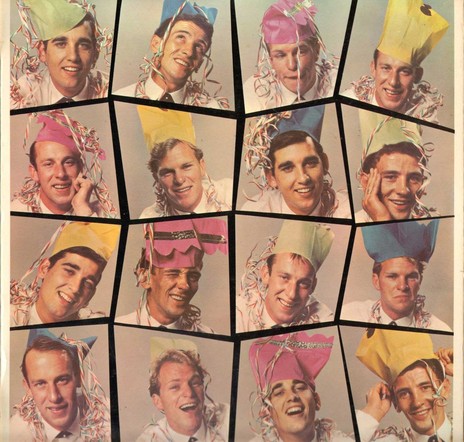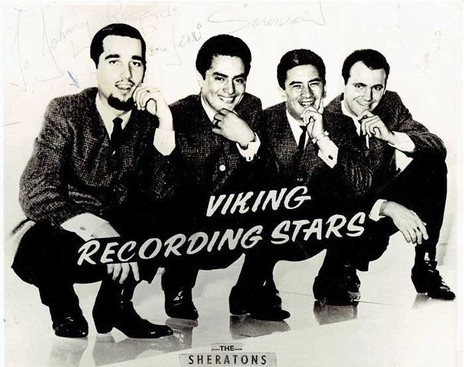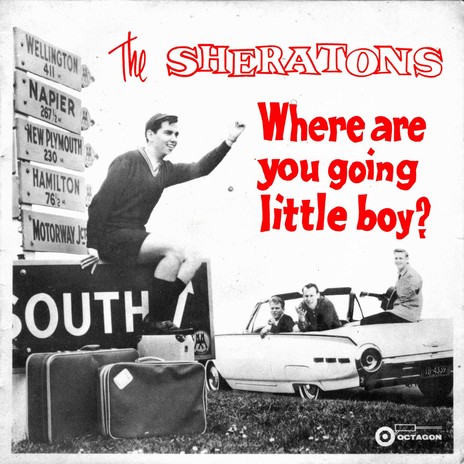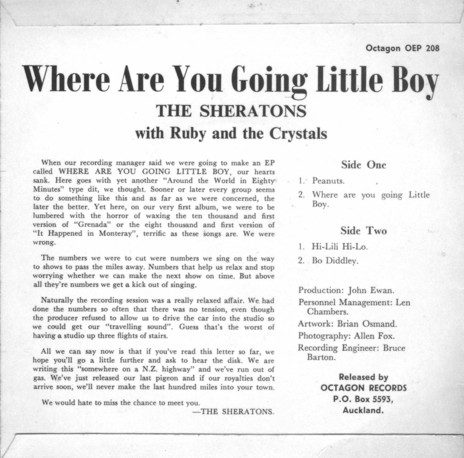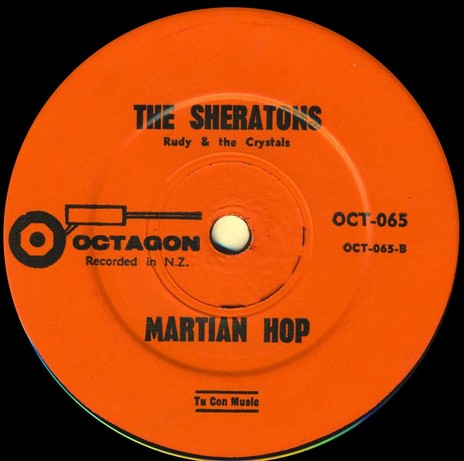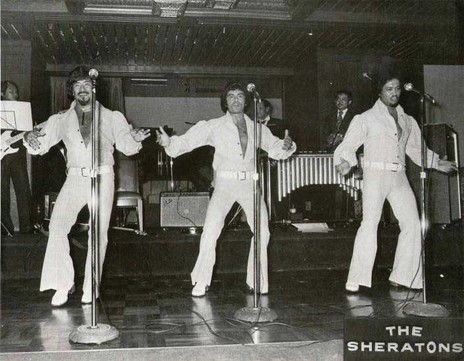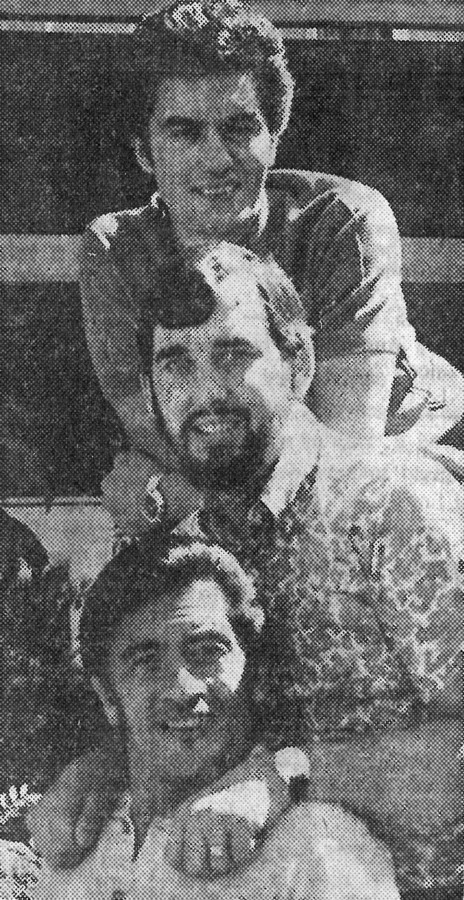It was the wrong move as the mass of mainly schoolgirls began smashing every window. The town’s sole policeman had left the scene to telephone for assistance from Auckland and Whangarei, both about an hour in opposite directions. The time had come for the four singers to make their getaway.
Leader Terri Sorenson made a dash towards the nearby Plunket rooms, a tumultuous sea of hands grabbing at him. As he clambered inside, the Plunket nurse insisted, “You can’t come in here!” With his skivvy torn apart at the seams he told her he wasn’t going anywhere. He spent the next week or so recuperating in Auckland from injuries “of a private nature”.
It was the height of The Sheratons’ fame in New Zealand. Two years later, after a rush of singles, two EPs and an album for Octagon Records, the vocal group broke apart and Sorenson took a new-look Sheratons to Australia to become a staple of the Sydney cabaret scene well into the 1970s.
As a 13-year-old, under the tutelage of singing teacher Sister Mary Leo, Terri Sorenson had earned the title of boy soprano of Australasia. His voice never really broke; he just developed a lower register, enabling a remarkable four-and-a-half octave range, topped off with a strong falsetto.
While still at St Peter’s College in Grafton in 1958, Terri began singing professionally with his older brother Bruce, also a tenor, as The Belltones. They drafted fellow St Peter’s student John Kearns, a bass singer, and NZ Herald employee, guitarist and baritone Graham Pettett and started working in coffee bars and clubs.
They performed regular floorshows at clubs such as the Shiralee, the Montmartre, the Oriental Dance Hall and dance events at St Seps.
When Australian act The Delltones became known in New Zealand, The Belltones renamed themselves The Sheratons – a moniker Terri Sorenson had come across in a magazine. Terri started working as a hairdresser at Kay’s Beauty Salon on Karangahape Road until the group demanded more of his time.
With a repertoire of the latest doo-wop material from the United States, The Sheratons’ four-part harmony won first prize on the radio show Have A Shot and they performed regular floorshows at clubs such as the Shiralee, the Montmartre, the Oriental Dance Hall and dance events at St Seps.
Evidence of The Sheratons’ far-reaching recognition came in the form of a telegram from Australia in 1962 asking Terri Sorenson if he would join The Delltones, whose singer Noel Widerberg had been killed in a car accident. Terri declined, wishing to stay loyal to his mates.
Bass singer John Kearns departed and was replaced by Peter Smith. Meanwhile, Octagon Records founder John Ewan heard The Sheratons one night and approached them to record a single for his label. Ewan had just the song to highlight Terri Sorenson’s clear falsetto – a Four Seasons B-side called ‘Peanuts’, originally recorded by Little Joe & The Thrillers in 1957.
He put The Sheratons into Bruce Barton’s studio in the Dilworth Building in Queen Street where they recorded the track live with backing band Rudy & The Crystals. ‘Peanuts’ was all over the radio in 1963 and became The Sheratons’ signature tune.
They struck out around the country on package tours with Peter Posa, Dinah Lee and Max Merritt and The Meteors for promoters Benny Levin and Phil Warren, wowing audiences but thankfully avoiding any further mobbing along the lines of that in Wellsford. They also appeared on the AKTV2 shows On Stage ’64 and In The Groove.
Keith Hunt replaced Peter Smith, Ron Green replaced Graham Pettett, and The Sheratons recorded more singles for Octagon – such as ‘Bony Moronie’, ‘Surf City’ and ‘Que Sera’ – initially with Rudy & The Crystals and later with Jimmy Sloggett and His Combo. The singles were swiftly repackaged as EPs Where Are You Going, Little Boy? and Shakin’ ’n’ Stompin’ and the album Having A Ball, all including the ubiquitous ‘Peanuts’.
But by the middle of 1965, all but Terri Sorenson had tired of the touring life and The Sheratons decided to break up. At a party in Rotorua, Terri met brothers Ronnie Ransfield, a motor mechanic, and forestry research nursery worker Lenny “Shifty” Ropeta. Both had toured nationally with Māori concert parties, and the trio started booking themselves as The Sheratons around beach resorts that summer. Wilkie Avery was also added but lasted just a matter of months.
The next year, they ventured to Sydney for a week’s trial that was extended and they were soon packing them in at the nightclubs, RSLs and leagues clubs across the city. The next time they appeared in Auckland, for a stint at Logan Park, was in February 1970, having entertained Anzac troops in Vietnam and undertaken five tours on the South-East Asia circuit between their Australian commitments.
Although their busy schedule afforded no time for more recording, CBS Australia reissued the old ‘Peanuts’ as a single under the name The New Zealand Sheratons in 1966, despite the new line-up having moved on somewhat.
With he and his wife Cindi wanting their children educated in New Zealand, Terri Sorenson left Australia at the end of the 1970s. The Sheratons continued a while longer in Sydney with Ransfield and Ropeta adding Johnny Kay.
In 1991, Terri Sorenson, Ransfield and Ropeta reunited as The Sheratons for a couple of shows at the Rotorua Soundshell but talks of a full tour were ended when Ropeta died of a massive heart attack at his Sydney home. Sorenson has barely sung since.
